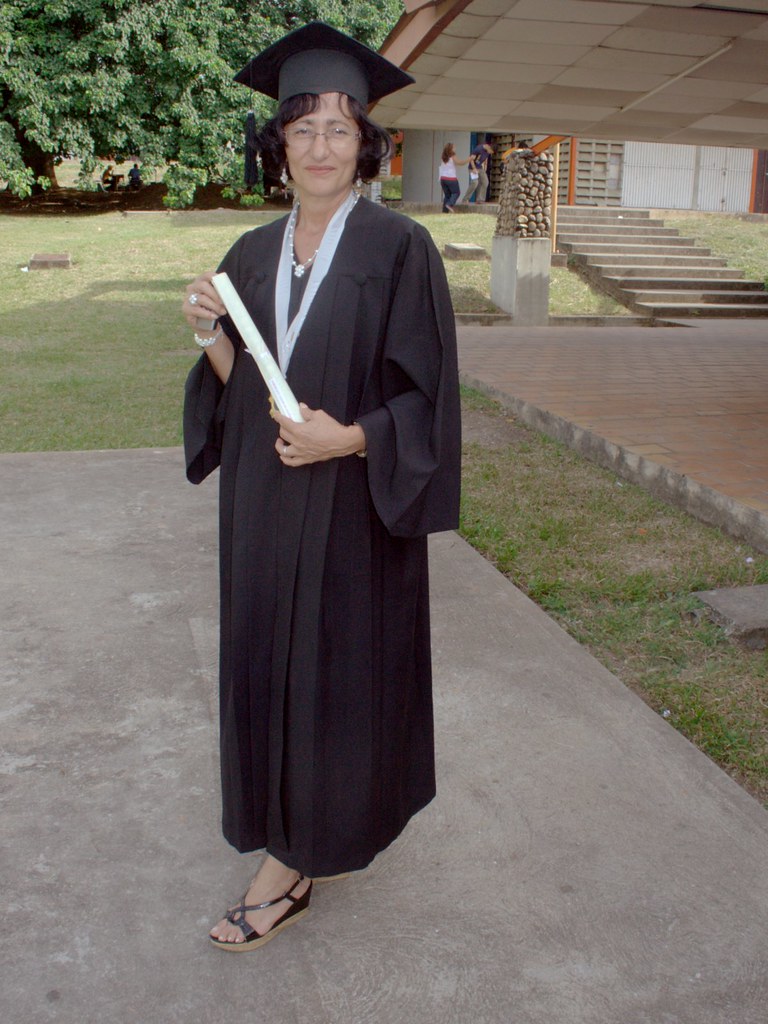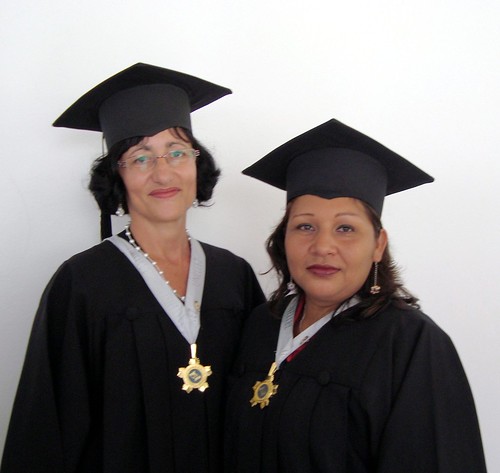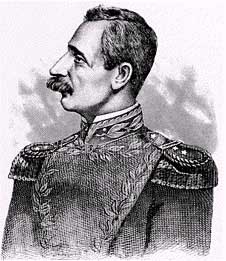
A most blessed season a greetings from all of us. We celebrated our first Christmas Eve service in La Caramuca on Thursday, December 24, 2009. It was a communion service followed by a Christmas dinner for about 30 children, youth and adults.
In fact, it was our first midweek service of any kind. It is no mean feat to get people in Venezuela to gather on Sunday morning, never mind during the week. And, as I have said before, church attendance is particularly low during the Christmas and Easter holidays, as nearly everyone heads to the beach or the mountains, or stays home to party. So we thank God for the good response this year.
The Christmas dinner was traditionally Venezuelan: hallacas, pan de jamon and potato salad. Hallacas are like Mexican tamales, but instead of being wrapped in corn husks, they are wrapped and cooked in smoked banana leaves. The ingredients include at least three types of meat. It is the custom to go door to door and present bags of hallacas to your friends and family as a Christmas gift. Hallacas require a vast amount of work to prepare, which seems to be the whole point. Luz Maria and her daughters spent the two days before Christmas Eve cooking hallacas.
Venezuelans consider hallacas more essential to Christmas than anything else and are quite puzzled when you tell them the main dish for Christmas dinner in the United States might be ham, turkey, roast beef or whatever.
Pan de jamon is bread with slices of ham baked in. This you can purchase from the bakery. The potato salad is jus potato salad.
 St. Nicholas visits our preschool
St. Nicholas visits our preschool
We closed the preschool for the three-week holiday break on December 12 with a Christmas party for the children, their teachers and parents. San Nicolas (also known as Papa Noel or even Santa Claus) made a special appearance. If you follow the church calendar, you may recall Sunday, December 6, was the day of commemoration for Nicholas of Myra, the fourth-century bishop who provided the historical template for all the variations of the gift-giving elf king.

Recently
it was reported that Dr. Caroline Wilkinson of England's Manchester University, using measurements of the bishop's skull (which still exists) and modern computer technology,
reconstructed the face of St. Nicholas. The result is quite similar to traditional portraits of St. Nicholas, except for one thing: He had a badly broken nose, similar that of a boxer or hockey player. This might be considered consistent with the story that Nicholas got involved in fisticuffs with the arch-heretic Arius at the Council of Nicaea in 325 A.D., a fight that had to be broken up by fellow bishops.
Jesus and John the BaptistHowever, since the beginning of the Advent season, we have spoken more of John the Baptist and his relation to Jesus, both at Sunday service and in the midweek Bible lesson in the preschool. The story of how Mary visited her relative, Elizabeth, after the archangel Gabriel had announced the impending birth of Jesus (Luke 1:39-45) provided the opportunity to talk about when human life begins. The passage in Luke says that in his mother's womb, John leaped for joy at the sound of Mary's voice, because even unborn John was a prophet and knew that Mary was, as both his mother, Elizabeth and the angel had said, "blessed among women" and would give birth to the promised Messiah. This passage is one of many in the Bible which asserts that human life begins in the womb and that, therefore, those who say abortion does not constitute the taking of a human life are wrong.

We also talked of how John the Baptist, with his call to repentance, was, as Luther wrote, the consummate preacher of the Law, which convicts people of sin. But Jesus, was in His Person the living Gospel itself, Who through his life, death and resurrection made possible reconciliation between a just and holy God, and sinful human beings. But the relationship between Jesus and John illustrates that Law and Gospel are inseparable. They were friends and relatives, and both were sent by God. The archangel Gabriel announced both their births and both births were miraculous; Jesus was born to a virgin and John to a woman past childbearing years. Jesus said of John, "Among those born of women, there has arisen none greater than John the Baptist" (Matthew 11:2-10) and in Matthew 17:10-13 that John fulfilled the prophecy that Elijah would return before the Messiah came. John said of Jesus that he, John, was not worthy to untie Jesus' shoelaces and "Behold, the Lamb of God Who takes away the sin of the world!" (John 1:27-30).
Finally we talked of the difference between John's baptism and the baptism of Jesus. The baptism of John was an exterior ritual that expressed an interior state (repentance), which is how some people think of Christian baptism today. But, as John himself said, the baptism of Christ is quite different. It is truly baptism with water and the Holy Spirit, in which we receive the forgiveness of sins, the adoption as children of God and the righteousness of Christ. The promise of baptism does not depend on our own will, understanding or state of mind, and in that we take comfort in times of doubt.
Our Spanish hymnal, Culto Cristiano, contains a version of the Matins service with the Benedictus or Song of Zechariah (the words are based on Luke 1:68-79, the priest Zechariah's song of thanksgiving upon the birth of his son, John the Baptist). Sadly we have not had much opportunity to use the Matins service here, and I am not sure if I can recall the music well enough to sing the Spanish version of the Benedictus. But it always was, along with the Te Deum Laudamus, my favorite part of Matins.
 Image via Wikipedia
Image via Wikipedia
Let us praise the Lord, the God of Israel,
For He has come and redeemed His people.
He has raised up a mighty Saviour for us
From the house of His servant David,
As He promised long ago
Through His holy prophets,
That He would save us from our enemies,
From the power of all who hate us.
He promised to show mercy to our ancestors,
And to remember His holy covenant,
The oath which he swore to our father Abraham,
To rescue us from the power of our enemies,
So that we might worship the Lord without fear,
Holy and righteous in His sight
All the days of our lives.
And you, my child, will be called the prophet of the Most High,
For you will go before the Lord to prepare His way,
To give the knowledge of salvation to His people
By the forgiveness .of their sins.
Through the tender mercy of our God,
The day of salvation will dawn on us from heaven,
To shine on those who live in darkness and the shadow of death,
To guide our feet into the way of peace.
Speaking of light in the darknessThanks to generous donations from supporters in the United States, we have purchased a gasoline-powered generator. Several weeks ago Luz Maria went out to get an estimate on the price of a generator and found a wide array of models of different sizes and prices. When we returned to the shop where she found the best deal, there were only two models left in stock. Clearly other people had the same idea that we did. We continue to experience almost daily power outages of several hours duration.
There remains one obstacle to putting the generator in place; another of our mysterious shortages of materials, this time of cement. We do not want to run the generator in our living quarters, neither do we want it stolen, so we must build an outdoor enclosure. And that will have to wait until we can get cement.
Nevertheless we thank the donors for this Christmas present.








![Reblog this post [with Zemanta]](http://img.zemanta.com/reblog_e.png?x-id=ebb7df21-2ee5-4238-8b64-32fcb4e69e5b)





![Reblog this post [with Zemanta]](http://img.zemanta.com/reblog_e.png?x-id=150ac9e3-5190-4c37-8337-6e4564b64b15)





![Reblog this post [with Zemanta]](http://img.zemanta.com/reblog_e.png?x-id=d38176eb-d289-4fcf-9fe5-e5e34726a6c0)